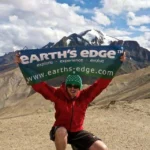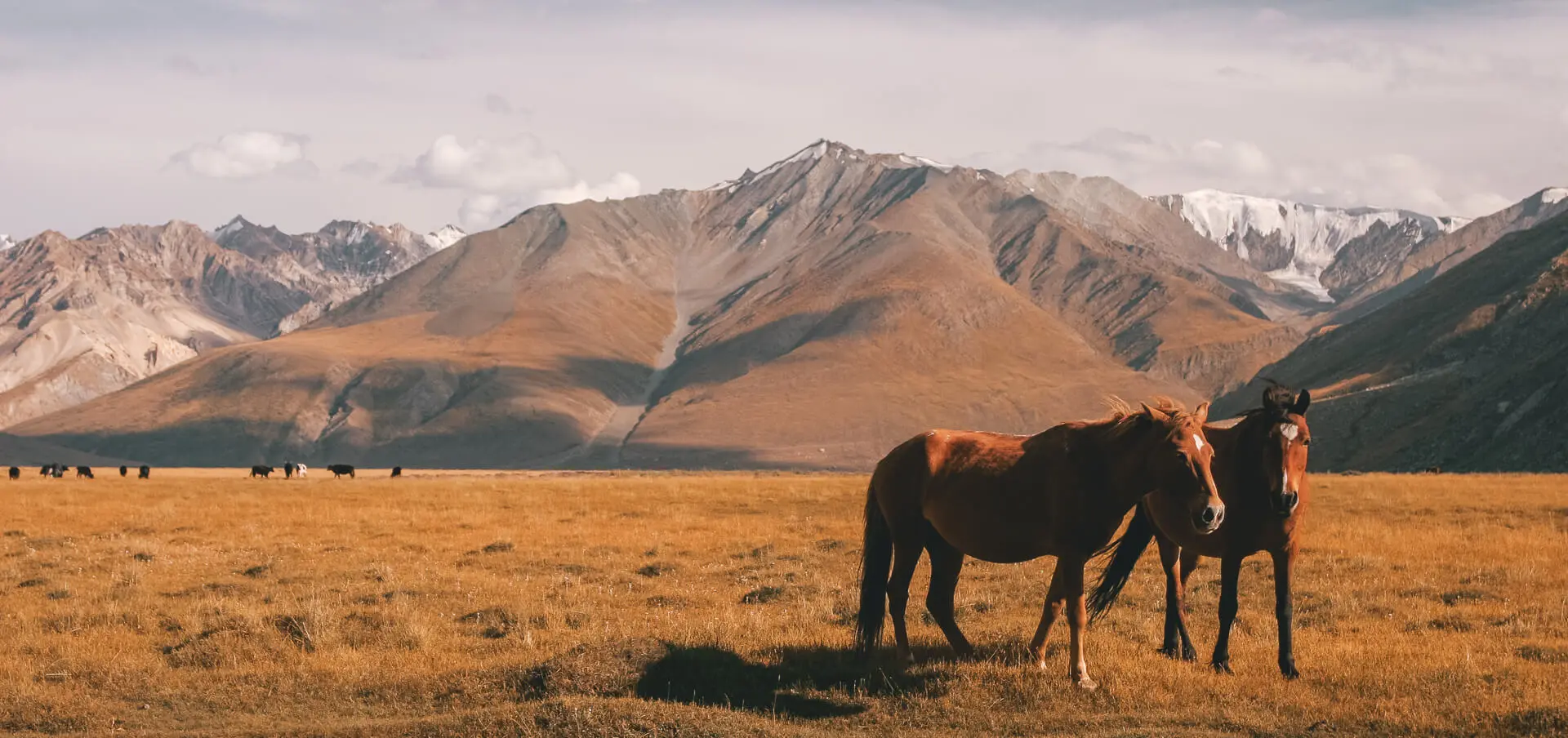Overview
We are the only company in the world who have an expedition leader and doctor on all Mount Elbrus (5,642m) expeditions while keeping group sizes sustainably small. Established in 2007, we offer high altitude trekking and mountaineering in some of the most breathtaking locations around the world.
Climbing Mount Elbrus
Elbrus is Europe’s highest peak and one of the ‘Seven Summits’. Unlike most companies, we ascend the mountain from the Northside which has a lot of advantages when compared to the South side. The South side of Elbrus is essentially a ski resort. Ascending the mountain from this side sees climbers use cable cars, car lifts and piste machines to reach 4,700m and then walk the last 942 metres to reach the summit.
The Northside is far more remote and so feels like a proper adventure! There is only a fraction of climbers on this side, however the highest place we can sleep on the mountain is at 3,700m which makes the summit day extremely tough with 1,900m elevation gain.
Located on the stunning Caucasus range the scenery on Elbrus is second to none. These beautiful mountains, which separate the Black Sea and Caspian Sea, are almost 1,000km across. The weather in the region is notoriously fickle and getting a clear window is the key to a successful summit attempt.
Our 14-day itinerary allows us time to adjust the summit day by a day or two to take advantage of those windows when possible. The route from Camp 1 to the summit is completely covered in snow and ice but it is not technical. We would recommend you have experience on snow and ice but it is not essential as we will provide training on the expedition.
Please note the following itinerary is very much subject to change based on weather conditions and the health and fitness of all expedition members. Our itinerary allows a fantastic opportunity to climb Elbrus without using any lifts or snowcats. You should be aware there is no guarantee in reaching the summit. The nature of high altitude peaks such as Elbrus means that sometimes we don’t get a window of good weather which allows us to attempt the summit.
Elbrus Expedition Costs & What’s Included
The total cost of trekking Elbrus is highlighted above. You are required to pay a €399 deposit to secure your spot. A part payment of €1,000 is due six months prior to departure. You can pay the remaining balance by instalments or in full. All fees must be paid three months prior to departure.
Your fees include the following:
- International flights from Dublin to Moscow (Economy Class) (UK flights not included)
- Internal flights in Russia
- Experienced expedition leader
- Experienced expedition doctor
- Training Weekend
- Earth’s Edge team of guides, permits and park fees
- All accommodation based on twin sharing in hotels in Moscow and Pyatigorsk and camping elsewhere
- All meals and drinking water except in Moscow and Pyatigorsk where accommodation is based on B&B
- A celebratory dinner
- All transport throughout the expedition
- All group gear consisting of first aid kits, mountaineering equipment, cooking equipment etc.
Flying from the UK?
You are more than welcome to join us from the UK. If so, you can select the ‘exclude flights’ option on the checkout. You can then book your own international flights to Moscow.
Read our Elbrus blogs
Do you fancy having more information on this expedition? We have lots of extra insight into our Elbrus trips here.
Watch our Info Talk
Check out our talk from the Great Outdoors in Dublin about both Elbrus and Aconcagua. We cover Elbrus first and then Aconcagua afterwards. There is also some general information from around 21 minutes in about fitness and our pre-departure weekends.
Itinerary
Day 3
Pyatigorsk to Emmanuel Meadows
↓
We drive for 4hrs through rural countryside to reach Emmanuel Meadows (2,200m).
Day 4
Carry to Camp 1, 9 hrs trekking
↓
Carry equipment and some food to leave at camp 1 (3,763m) then return to basecamp.
Day 7
Acclimatisation hike to Lentz Rocks, 6 hrs trekking
↓
Today we walk to the Lentz rocks (4,650m) gaining significant altitude before descending back to camp 1 for dinner.
Day 9
Summit Day 16hrs
↓
Early in the morning, we retrace our steps to Lentz rocks. After a break, we pass through an area of rocky outcrops and then start to traverse to the west towards the saddle. We take another break at the saddle and then ascend up the Western summit. We spend a short while at the summit (5,642m) for photos before descending all the way back to Camp 1.
Day 11
Camp 1 to Emmanuel Meadows, 4 hrs
↓
Today we descend back to our base camp in the Emmanuel meadows (2,200m).
Day 12
Emmanuel Meadows to Pyatigorsk, 4 hrs
↓
In the morning we drive to Pyatigorsk. Afternoon at leisure followed by a celebratory meal.
Facts
Elbrus is part of the Caucasus mountain range which is situated in the South of Russia near the Georgian border. The Caucasus technically sits in Asia and Europe, although most geographers place it in Europe. Elbrus is the tallest mountain in Europe and one of the Seven Summits.
Elbrus actually has two summits. The West summit is the highest at 5642m, the East summit is just 21m shorter at 5621m. If you climb either of the two summits it is considered that you’ve climbed Elbrus.
Elbrus has 22 glaciers that feed three rivers — Baksan, Malka and Kuban. The mountain is covered with snow all year-round.
In 1829, Kabardinian Killar Khashirov, a guide for a Russian army scientific expedition, was the first to reach the summit of Elbrus.
Russian adventurer Alexander Abramov led an expedition in 1997, that drove a modified Land Rover to the summit, making it the highest mountain climbed by a vehicle.
Best time to climb Elbrus?
July and August are the best months to climb Elbrus as the weather is at its most stable. Although even in the summer, nighttime temperatures can drop to -8 C and fogs can appear out of nowhere at any time of year. Weather conditions on the mountain are notoriously unpredictable and that is why we factor in a spare summit day to the itinerary.
What do you need to climb Elbrus?
We have an extensive packing list on what you should bring with you when trekking Elbrus. You can view this packing list here.
How to prepare to climb Elbrus
We have classified Elbrus as a level 8 expedition, for more information about our levels system click here. Our new itinerary on the north side of Elbrus is an extremely tough challenge with an average of five hours of trekking per day, except on the summit day which involves roughly 16 to 20 hours of trekking. Although this is not a technical climb, it does require the use of crampons and an ice axe. Previous experience in winter conditions and at high altitude (>5000m) is recommended. We will provide training in how to move on snow and ice during the first three days of hiking. It is your responsibility to contact us if you have any concerns regarding your level of fitness, health or ability to complete the trek. We strongly recommend that you read our information pack, which gives in detail on how you should prepare for climbing Elbrus. You can read this document here.
 Certified B-Corp
Certified B-Corp
Earth's Edge is a certified B-Corp. In fact, we are the highest scoring B-Corp in Ireland. We are passionate about sustainable travel, bettering the lives of the people connected with the company and minimising our environmental impact.
 Tree Planting
Tree Planting
We plant 8 native trees in Nepal for each person that travels with us in partnership with Eden Reforestation Projects. If you would like to plant more, please contact info@earths-edge.com. Each extra tree costs €0.75 cents. Learn more about our tree planting here.
Dates TBD. Contact support@earths-edge.com to discuss your plans!
Available Dates
No dates available.
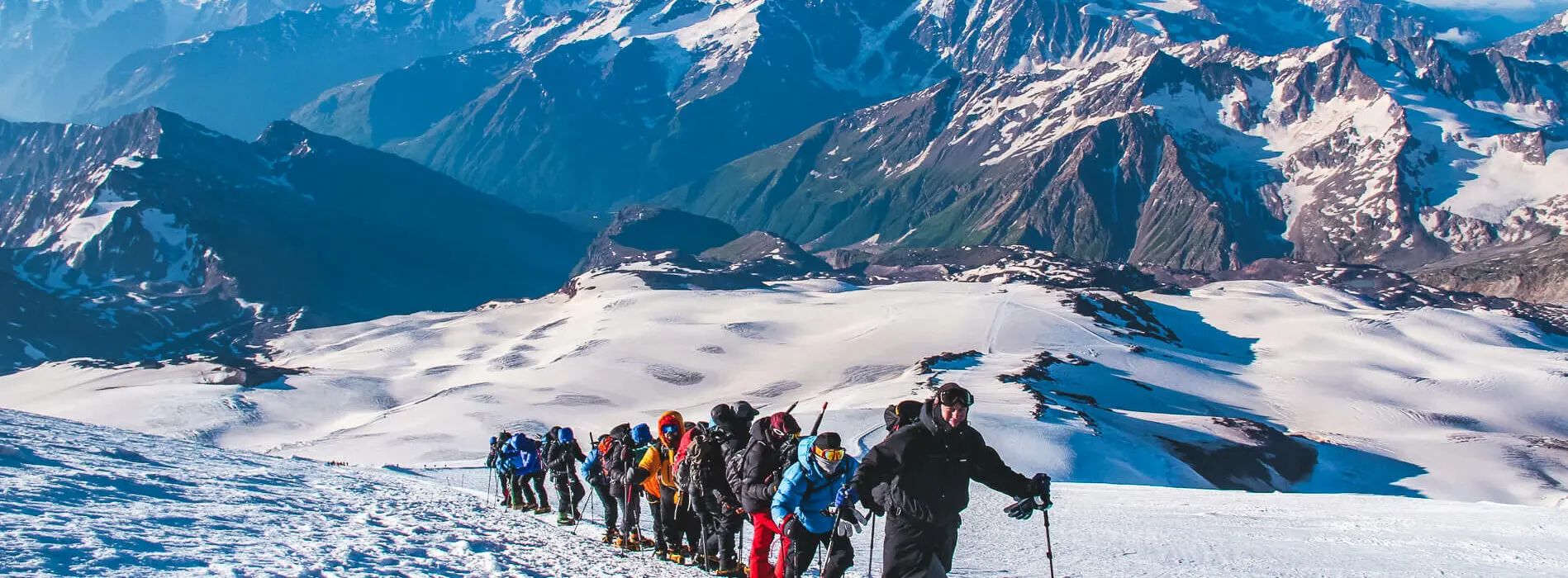
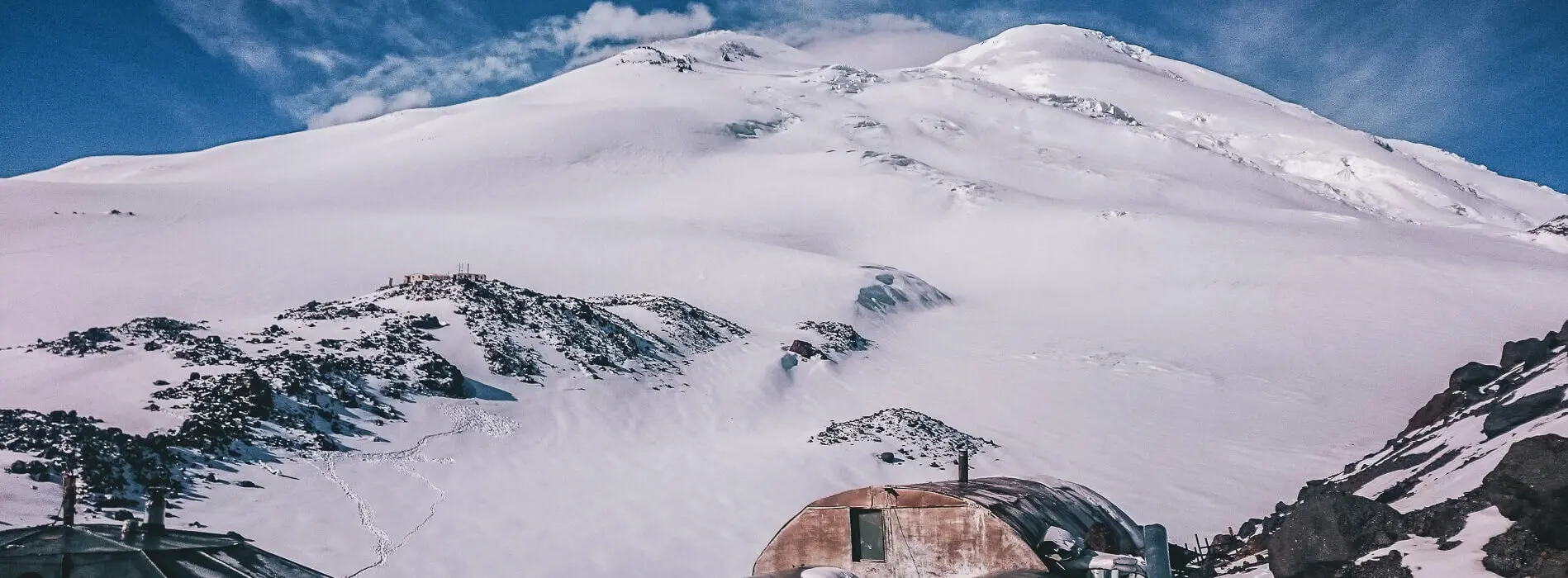
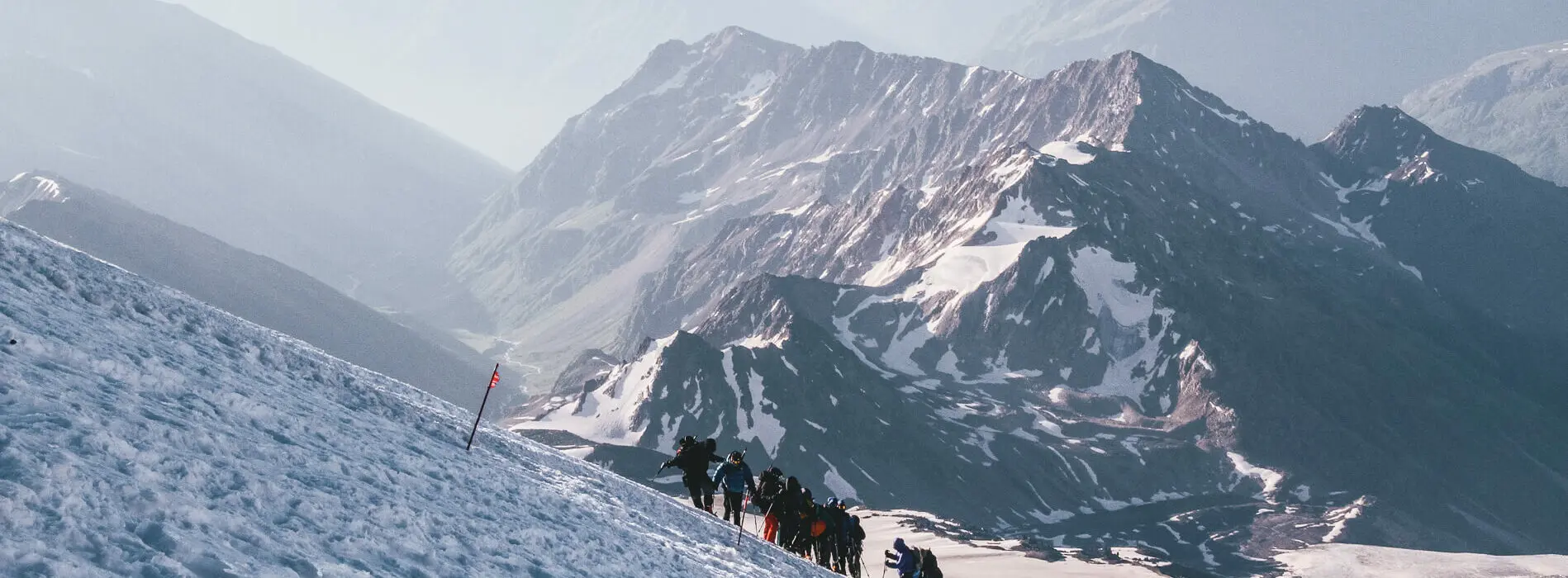

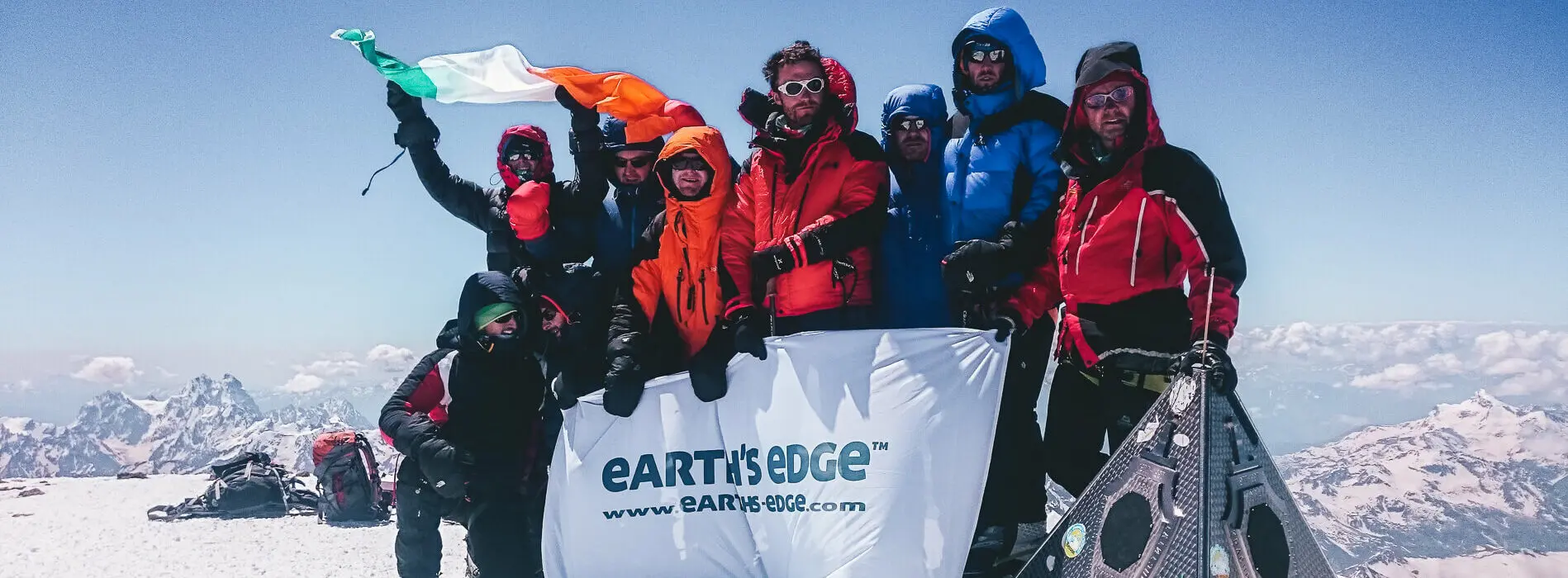
 Certified B-Corp
Certified B-Corp Tree Planting
Tree Planting